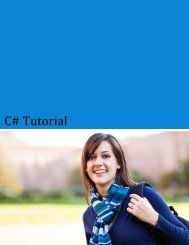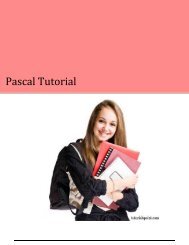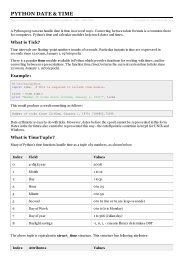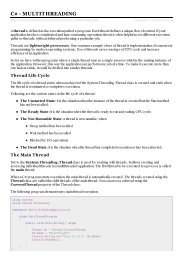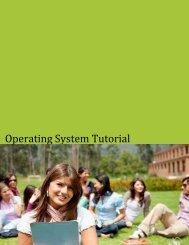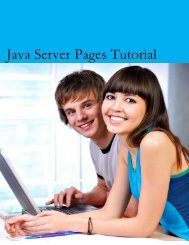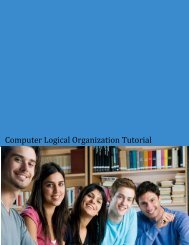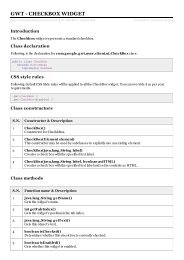Download Scala Tutorial (PDF Version) - Tutorials Point
Download Scala Tutorial (PDF Version) - Tutorials Point
Download Scala Tutorial (PDF Version) - Tutorials Point
Create successful ePaper yourself
Turn your PDF publications into a flip-book with our unique Google optimized e-Paper software.
Characters must not necessarily be printable; newlines or other control characters are also permitted. Here is a<br />
multi-line string literal:<br />
"""the present string<br />
spans three<br />
lines."""<br />
THE NULL VALUE<br />
The null value is of type scala.Null and is thus compatible with every reference type. It denotes a reference value,<br />
which refers to a special "null" object.<br />
ESCAPE SEQUENCES:<br />
The following escape sequences are recognized in character and string literals.<br />
Escape<br />
Sequences<br />
Unicode<br />
Description<br />
\b \u0008 backspace BS<br />
\t \u0009 horizontal tab HT<br />
\n \u000c formfeed FF<br />
\f \u000c formfeed FF<br />
\r \u000d carriage return CR<br />
\" \u0022 double quote "<br />
\' \u0027 single quote .<br />
\\ \u005c backslash \<br />
A character with Unicode between 0 and 255 may also be represented by an octal escape, i.e., a backslash '\'<br />
followed by a sequence of up to three octal characters. Following is the example to show few escape sequence<br />
characters:<br />
object Test {<br />
def main(args: Array[String]) {<br />
println("Hello\tWorld\n\n" );<br />
}<br />
}<br />
When the above code is compiled and executed, it produces the following result:<br />
Hello<br />
World<br />
TUTORIALS POINT<br />
Simply Easy Learning




